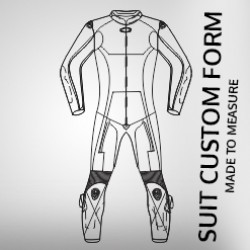In the realm of fashion and utility, few materials possess the timeless appeal and remarkable versatility of leather. From stylish jackets and accessories to durable footwear and protective gear, leather has been an integral part of human history for millennia. Beyond its aesthetic allure, however, lies a compelling aspect that often goes unnoticed - the inherent safety it provides. In this blog post, we'll delve into the reasons why leather remains a preferred choice for ensuring safety in various aspects of our lives.
- Natural Durability and Strength
One of the primary reasons why leather is synonymous with safety is its remarkable durability and strength. Leather is sourced from animal hides, which are inherently designed to protect the animal from external elements and potential harm. This natural resilience translates into the leather products we use today, such as leather jackets and gloves, making them effective guards against abrasions, cuts, and impact-related injuries. Whether it's for motorcycle enthusiasts, construction workers, or individuals seeking protection in their daily activities, leather products offer unparalleled safety and longevity.
- Fire Resistance
Another crucial aspect that makes leather a safety asset is its inherent fire-resistant properties. Unlike synthetic materials that can melt or catch fire easily, leather is slow to ignite and resists burning. This makes leather garments and accessories ideal for individuals working in hazardous environments where exposure to flames or high temperatures is a concern. Firefighters, welders, and industrial workers often rely on leather apparel and gear for added protection against burns and heat-related injuries.
- Weather and Environmental Protection
Leather's ability to shield against various weather conditions is yet another reason why it is favored for safety. Leather products, when appropriately treated, become water-resistant, making them suitable for outdoor activities and professions where exposure to rain, snow, or moisture is common. Moreover, leather's breathability prevents overheating and excessive sweating, which is particularly crucial in work environments where comfort is essential for maintaining focus and preventing accidents.
- Enhanced Grip and Traction
Leather's unique texture and grain pattern provide an enhanced grip, which proves to be invaluable in many situations. From sporting equipment like baseball gloves to work gloves for construction and heavy lifting tasks, leather's ability to provide a secure grip enhances control and minimizes the risk of accidents. This added traction makes leather a popular choice for motorcycle gear and footwear, ensuring motorcyclists and workers have better control over their movements.
- Protection Against Harmful Elements
Leather's dense and thick structure offers excellent protection against external elements that could cause harm. Whether it's shielding against sharp objects, splinters, or even some chemicals, leather's natural composition acts as a reliable barrier. This property is often crucial for individuals working in industries like construction, manufacturing, and carpentry, where exposure to hazardous materials is common.
Conclusion
In conclusion, leather's enduring popularity is not solely due to its undeniable aesthetic appeal. The safety aspects of leather are deeply rooted in its natural durability, fire resistance, weather protection, grip-enhancing capabilities, and ability to shield against harmful elements. From traditional uses in combat armor to contemporary applications in motorcycle gear and workwear, leather continues to be a preferred choice when safety is paramount.
While we must consider the ethical implications of using animal-derived products, modern advancements are exploring sustainable alternatives to traditional leather. Nevertheless, the time-tested properties of leather as a safety material continue to make it an integral part of various industries and everyday life.


